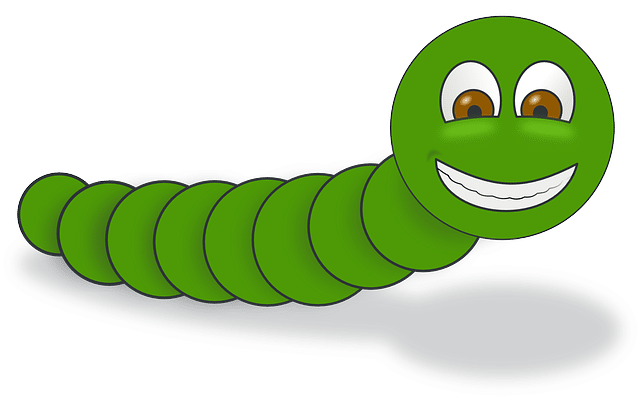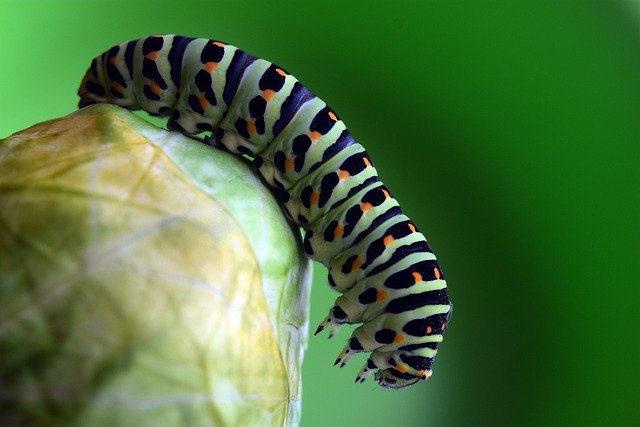Worms are often found in pigs. It is even one of the reasons people who don’t like eating pork run away from it, after religious belief, fats, and cleaning issues.
To pig farmers, we all know piggery is a capital intensive and lucrative business.
One of the issues you can have with pigs is infection with parasites, both ectoparasites, and endoparasites.
To prevent and control internal parasites, these are the common worms in pigs, their symptoms, and control measures to take to get rid of them from your pen.
Roundworms Ascaris suum
Roundworms are common endoparasites in pigs and are often seen in the feces of young-adult pigs.
When mature, it can grow up to 12 inches, and it’s creamy or beige in color.
Ascaris suum is a particular hazard when pigs are free-ranging or not kept on concrete floors.
The large roundworm (Ascaris Lubricoides) is very common and can cause a lot of damage in pig herds.
Adults live in the small intestine and can grow up to 300mm long and 6mm thick.
The female roundworm is capable of laying thousands of eggs per day.
These eggs pass out in the dung and become ineffective if ingested by other pigs after 21 days.
These eggs are extremely resistant and can remain ineffective for many years.
As part of the life-cycle of Ascaris suum, the eggs hatch out in the pig after ingestion and the larvae migrate through the liver and lung.
Symptoms of Ascaris suum
Irritation in the lungs causes coughing and ill-thrift, particularly in younger pigs.
Damage is also done to the liver, which renders it liable for condemnation at slaughter (‘milk-spot liver’).
Moreover, if an infection is heavy, the adult worms can partly obstruct the small intestine, causing weakness and loss of weight by the pigs.
Whip-worm (Trichuris suis)
Another harmful internal parasite in pigs is the whip-worm, also called Trichuris trichiura
This worm takes the whip shape, hence the common name – whipworm.
Whipworms can grow from larvae to adults in pigs and can also be transferred from pigs to humans.
The endoparasite in elongated can grow up to 55mm long when it’s fully mature.
Whipworm often lives in the large intestine and causes considerable damage to the gut wall resulting in diarrhea and weight loss in pigs.
Prevention and treatment of Trichuris trichiura is by ensuring their environment is cemented and clean.
You should also give anthelmintic to pregnant sows a few weeks before they give birth.
This is to make sure the endoparasites are expelled from their body and feces are long cleaned before farrowing.
Otherwise, the eggs in their feces can also continue their lives in piglets when they eat or drink near the feces.
Nodular worm (Oesophagostomum spp.)
The nodular worm (Oesophagostomum spp.) is another internal parasite of swine.
Oesophagostomum is not common in pigs as it can easily be prevented with concrete flooring of pigs’ houses.
The Nodular worms, like other worms, also live in the large intestine of pigs.
It burrows into the intestinal wall forming nodules during the larval stage, hence the name – “nodular worm”
The pig’s immune system tends to get rid of the larvae of nodular norms at the walls of the cecum and colon of the pigs.
Some may die during the process while those that escape move to the gut and mature into adults.
The eggs of nodular worms don’t hatch inside the pigs, they are rather excreted through feces and hatch there.
They can be active in the soil for up to a year, become larvae, and find their way inside the intestine of pigs when pigs feed in such a location.
Nodular worms can cause diarrhea (sometimes bloody) and anemia.
It does not only occur to pigs, it also affects cattle, goats, and a few other mammals.
You can control nodular worms through sanitation, clean their pen regularly, and make sure feces and urine are cleaned without delay.
You can also give deworming drugs to your pigs when due.
When a pig suffers from Nodular worms before being slaughtered, the large intestine and colon should be destroyed.
kidney worm (Stephanuru dentatus)
The kidney worm, scientific name – Stephanuru dentatus is a nematode affecting pigs
Stephanuru dentatus is a short worm, with size about one inch, and black and white color
This worm lives in the kidney or fats surrounding it and its eggs are excreted via the urine.
Kidney worms don’t usually pose a threat because their life cycle is about ten months, and since the eggs are in the kidney, they are easily ejected from the body when the pigs urinate.
When ingested, larvae migrate through the liver to the kidney and stay there for three months or more, and cause tissue damage
The larvae can also cause harm to the pig’s lungs, spleen, and back muscles.
However, the most damages cost is in the liver and muscles surrounding it.
giant kidney worm is a major handicap for free-ranging pig-farming systems and is often the main reason why pigs are penned.
Having said that, it can easily be prevented with concrete flooring in an intensive system, and regular cleaning of the pens.
When the pen is not up to quality standards, the worm, at the larval stage can be ingested in foods or earthworms, and can also penetrate into the skin.
Lungworms (Metastrongylus spp.)
Lungworms are also short, white nematodes found in the respiratory tract of pigs.
The larvae are usually found deep in the bronchioles of pigs.
Lungworms (Metastrongylus elongatus) can also be a problem in free-range pigs; infection occurs when pigs eat earthworms, which are the intermediate hosts.
The eggs are ingested by earthworms, and when pigs feed on the infected earthworms, they are transported to the small intestines.
From there, they are further transported by the lymphatic system to the heart and down to the lungs.
Lungworms cause irritation and coughing and predispose the lung to secondary pneumonia.
These are the symptoms of Metastrongylus elongatus.
Contaminated feed and water are the usual sources of infection with internal parasites.
Control can be effected by breaking the life-cycle, which means regularly moving range pigs on to the fresh ground and frequent cleaning and removal of feces in-housed pigs.
At the same time, unless there’s good evidence that there is no worm infection in the herd, breeding pigs should be routinely dosed with broad-spectrum anthelmintics, and young stock dosed soon after weaning.
Tapeworms (Taenia solium)
The common tapeworm is Taenia solium. The pig is its intermediate host and the adult worm lives in man.
Tapeworms are transmitted to pigs when they pick up their eggs from feces and the larvae then encyst in the pig’s muscle, particularly in the region of the heart and tongue.
The following symptoms occur when pigs are infected with tapeworms
- Pain in the abdomen
- General weakness.
- Loss of appetite
- Diarrhea.
- Dizziness
- Weight loss
However, these symptoms are not limited to tapeworm infection only, the signs also occur in other infection with internal parasites and nematodes.
When infected pig meat is eaten by a man, the larvae of tapeworm hatch out, and the life cycle is completed.
As a consequence, carcasses that are affected (measly pork) are condemned at slaughter.
By preventing pigs from having access to human feces, the parasites can be eliminated.
Fenbendazole is also commonly used to treat tapeworms and some other worms in pigs.
In some countries, live pigs are checked at the market place by trusted experts for the presence of tapeworm cysts in the tongue.
The result of the examination influences the price paid to the producer.









